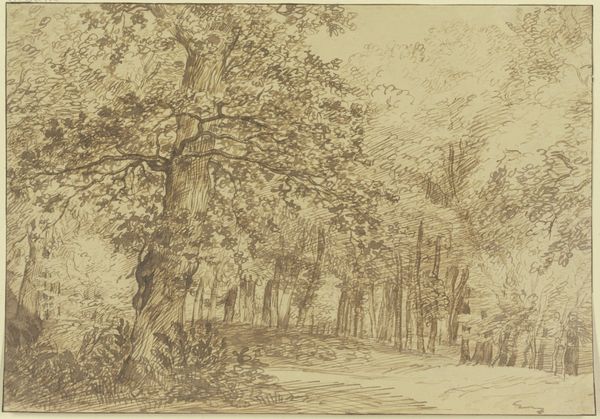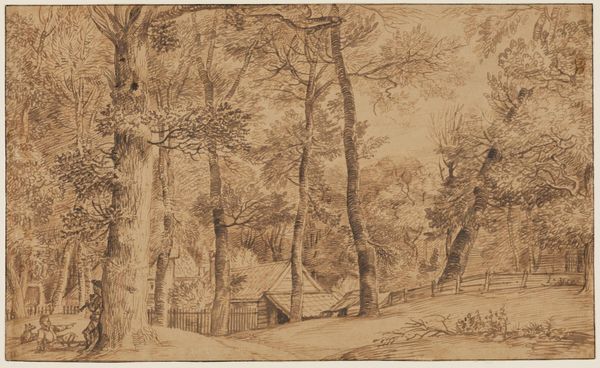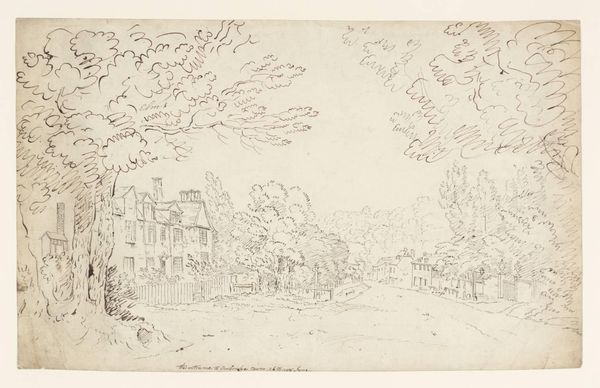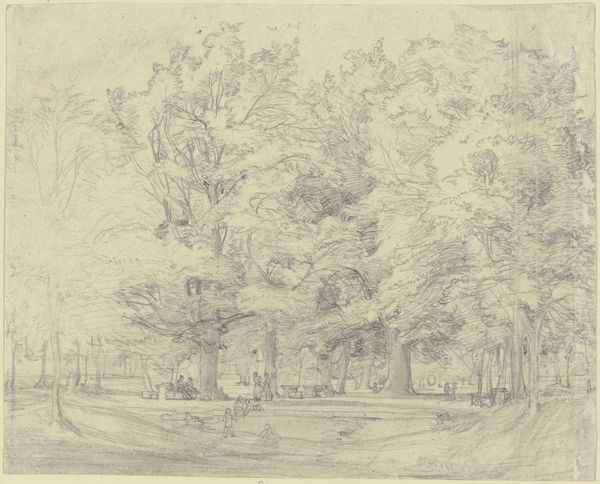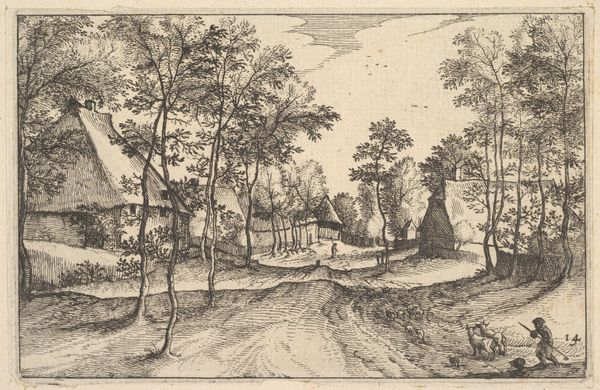
drawing, paper, ink
#
drawing
#
baroque
#
dutch-golden-age
#
pencil sketch
#
landscape
#
paper
#
ink
Dimensions: height 113 mm, width 186 mm
Copyright: Rijks Museum: Open Domain
Curator: Look at this exquisite drawing, "Houses and Trees on a Dike" created around 1640-1650 by Rembrandt van Rijn. It’s rendered in ink on paper and part of the Rijksmuseum collection. Editor: My first thought is: how evocative. It's almost monochromatic, with layered brown washes creating a really soft, yet structured landscape. There is an overall sense of understated drama through tonal contrast. Curator: Yes, and note how the stark contrasts between the inky trees and the muted buildings behind guide our eyes. The placement of the trees acts almost as a frame, structuring the whole visual plane of the composition. Observe, too, how his lines capture texture! Editor: It feels so familiar and quietly powerful, this tension between cultivated land and untouched wilderness. Dykes often carry immense cultural significance. These structures, of course, refer to humankind's negotiation with the natural world, the persistent need to create and maintain safety and order. I think of hard-won stability; there is so much embodied history there. Curator: A fascinating point. I agree; dykes not only denote our struggle to manage the landscape; they also imply ideas of defense and demarcation, creating formal boundary markers. From a purely formalist position, the horizon functions as an anchor for this scene. Notice, also, the linear patterns he evokes, how he controls line thickness with the quill to draw attention to focal points! Editor: Look at those figures on the left side. They almost disappear in the grand scheme. Maybe they indicate scale, but they could also signal the inhabitants, the inheritors of all the labor contained within this tiny scene. The architecture feels almost secondary, as if the emphasis rests upon people. What do you think? Curator: They do indeed provide a crucial sense of scale. Their inclusion helps activate the composition, lending animation to the otherwise static landscape. However, let's appreciate his deliberate arrangement of these components; he invites us to investigate these dynamic interrelationships within the composition. Editor: Yes. And now I’m thinking about vulnerability—perhaps because of the drawing’s modesty in scale and material. Yet in the mundane subject, and in rendering a specific moment and site with focused intensity, van Rijn encapsulates something essential about humankind. I'll definitely carry those concepts forward! Curator: Likewise! Examining his interplay of light and line always delivers fresh insight into the artist’s intentions and artistic choices.
Comments
No comments
Be the first to comment and join the conversation on the ultimate creative platform.
